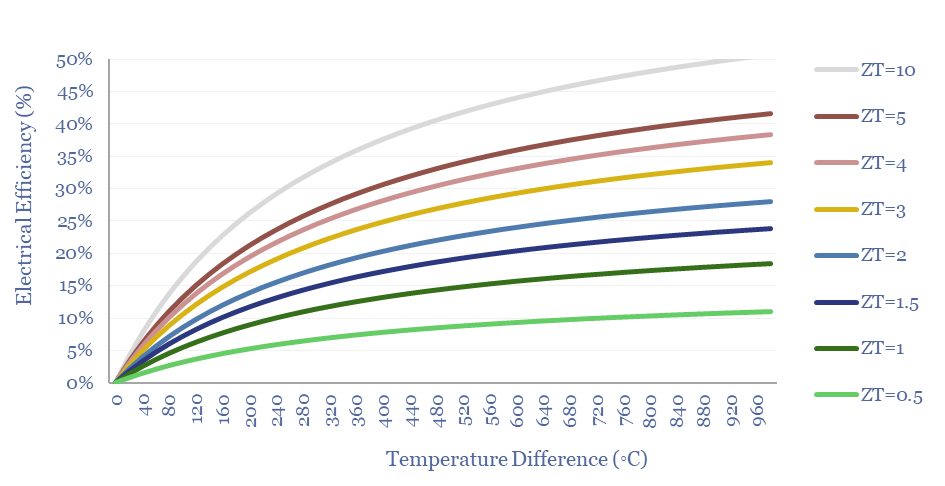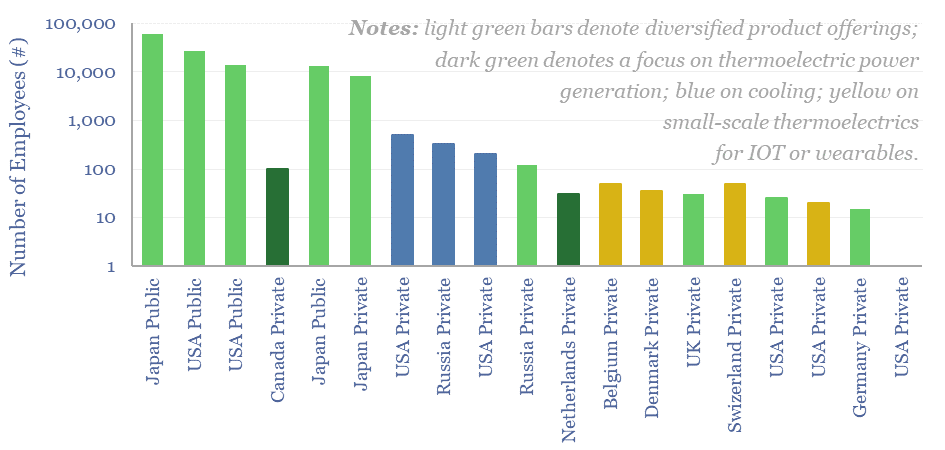Thermoelectric devices convert heat directly into electricity, or conversely provide localized cooling/heating by absorbing electricity. This data-file screens leading companies in thermoelectrics, their product specifications, applications and underlying calculations for thermoelectric efficiency.
This data-file gives an overview of twenty leading companies in thermoelectrics, producing thermoelectric generators or other devices. Most of them are private with some larger names listed in the United States and Japan.
These companies manufacture thermoelectric modules, power generation systems (via the Seebeck Effect), cooling systems (via the Peltier effect) or small-scale power supplies for IOT and wearable devices.
Thermoelectric generators produce power via the Seebeck effect, generating an electromotive force between parts of a conductor that are at different temperatures. The process can also be reversed: by applying voltage to a thermocouple (a junction of two different conductors) one part of it is cooled while another is heated.
Thus, thermoelectrical devices can be used as generators or as temperature regulators. Specific applications, thermoelectric products and their efficiency factors are plotted in the data-file.
Smaller thermoelectric generators are used to power wireless sensors, transmitters, actuators, and other devices among the Internet of Things. Larger generators have been used to power space probes via heat from the decay of onboard radioactive material.
A breakdown of thermoelectric efficiency from first principles is also broken out in the data-file, as a function of the material’s Figure of Merit (aka the ZT score, chart below). ZT can be calculated from Seebeck coefficients, electrical conductivity, and thermal conductivity of mobile electrons and the underlying crystal lattice (numbers in the data-file).

Most commercial materials today have a ZT<1 and therefore have 2-7% module-level efficiencies for thermoelectric generators, through to 0.5-5x Coefficients of Performance for thermoelectric cooling.
Today’s efficiency factors are generally lower than Organic Rankine Cycles and much lower than Thermal Power plants. But these devices also use semiconductors. Hence could their future efficiency improve, matching the recent trends in the solar industry? We aim to answer this question in our recent overview of thermoelectric generation.

